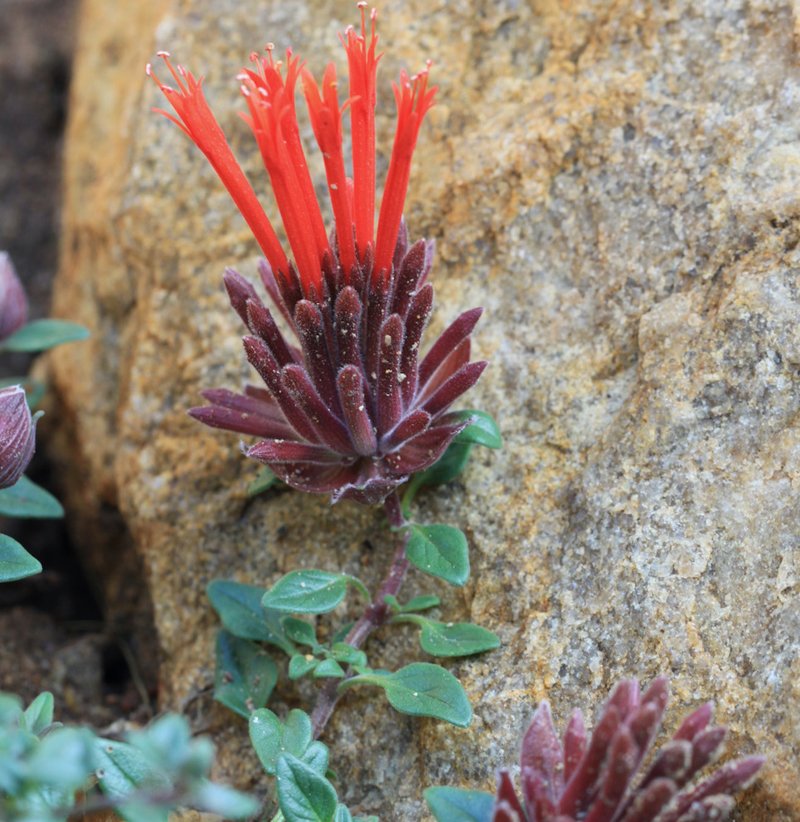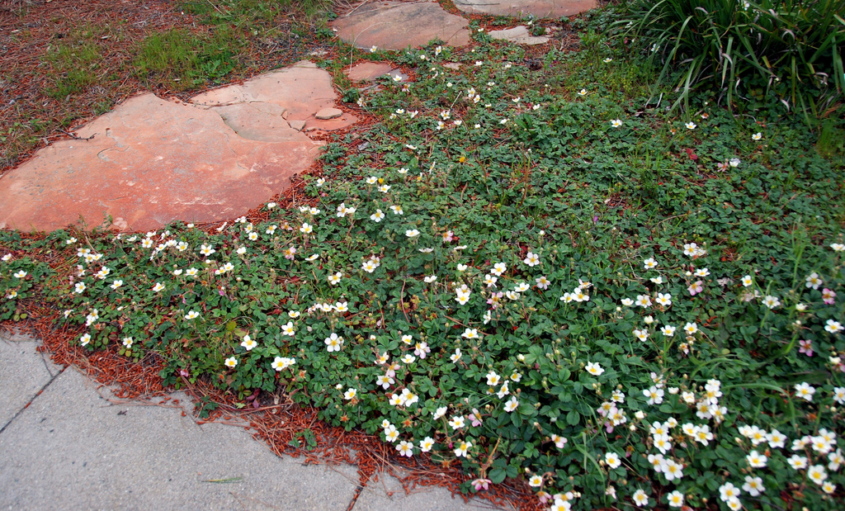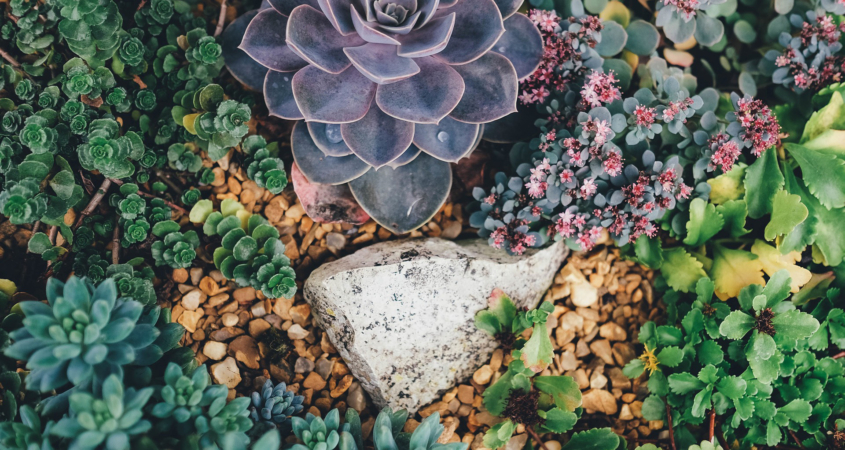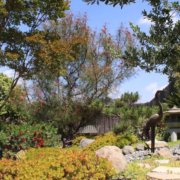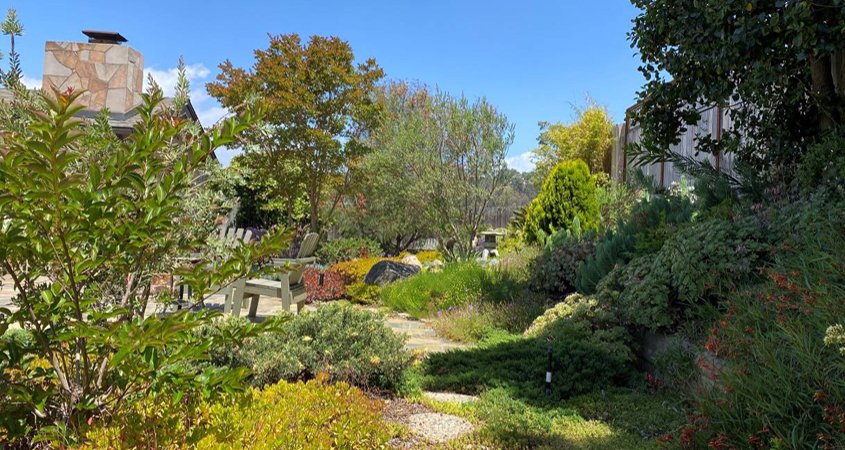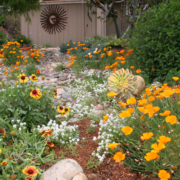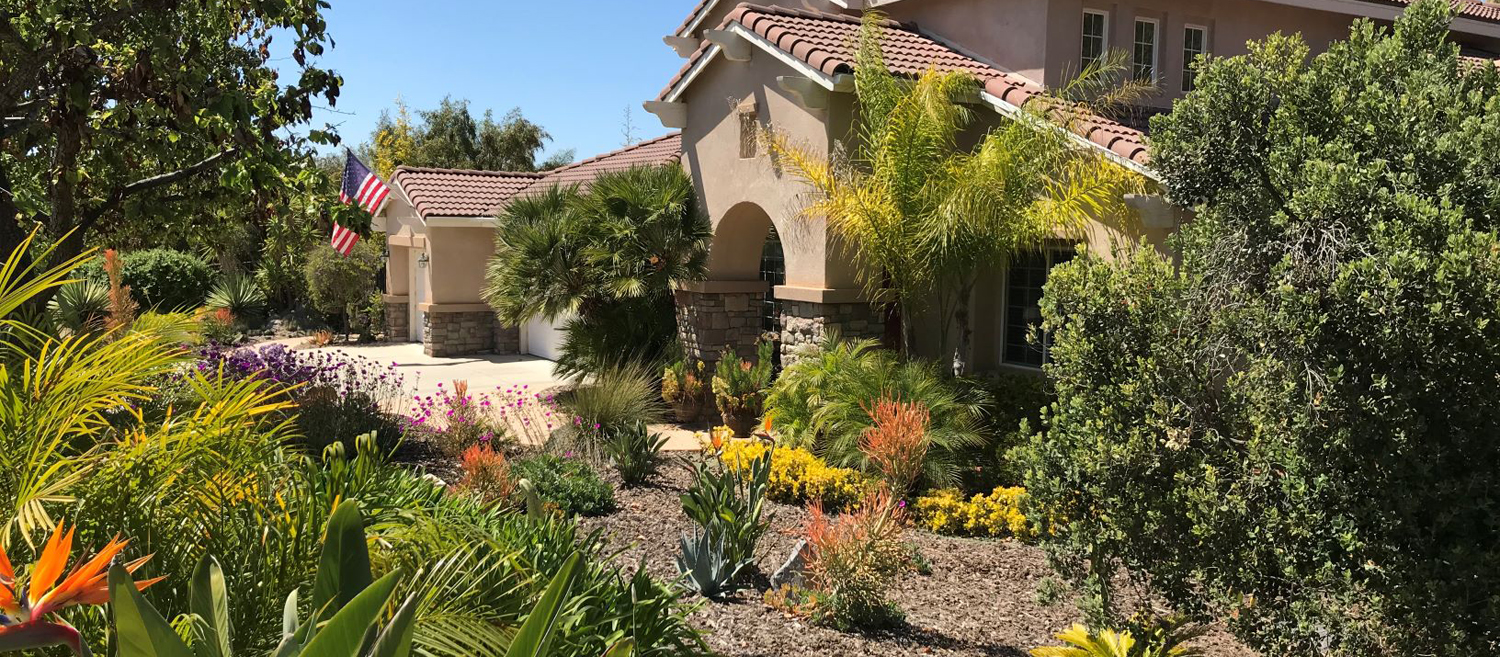Using water efficiently is a way of life and an important responsibility in a beautiful, Mediterranean climate like San Diego County. WaterSmart landscaping is all about rethinking the way limited water resources are applied and making smart choices to reduce outdoor water use.
Saving water isn’t the only reason for a WaterSmart garden. WaterSmart landscapes are attractive and in balance with our environment and climate. They incorporate elements of sustainable landscaping such as healthy, living soils, climate-appropriate plants, high-efficiency irrigation and rainwater harvesting, and generate many environmental and community benefits.
Working within the WaterSmart Matrix, you have lots of flexibility when selecting the combination of plants and irrigation to meet your water efficiency goals. Whether you want to create space for entertaining, limit landscape maintenance, or maintain some turf for children and pets, you can reach your water-saving goals and create an outdoor space to live in without resorting to gravel, concrete, or artificial turf.
These three models can help you get started. You can swap plants within the same usage categories, as long as the percentage mix of low, moderate, and high water use plants remain the same.
Mediterranean Effect: Low to Moderate Water Use Planting
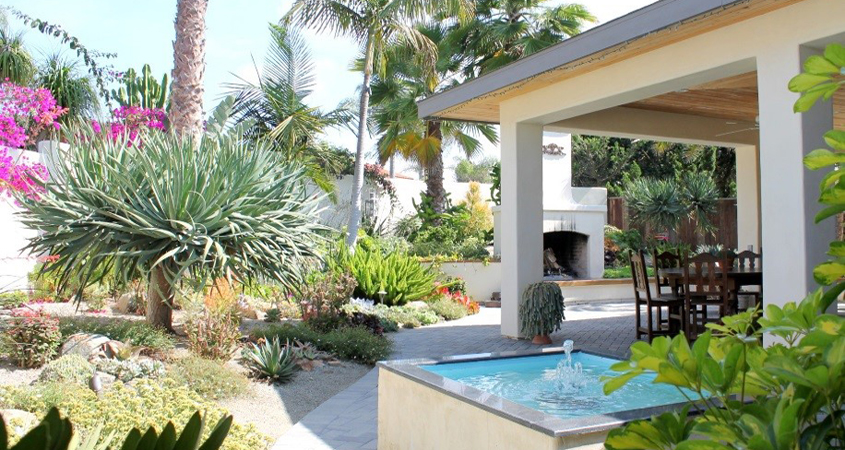
The Bucks’ winning landscape design includes beautiful outdoor living areas. Photo: Olivenhain Municipal Water District
Low water-use plants: 45%.
Moderate water-use plants: 45%
High water-use plants: 10%
In this style, small areas of turf in the high water use category are balanced by beautiful trees, flowering shrubs, and groundcover choices which thrive in our San Diego-style Mediterranean climate. This is a landscape perfect for outdoor entertaining.
Contemporary Effect: Low Water Use Planting
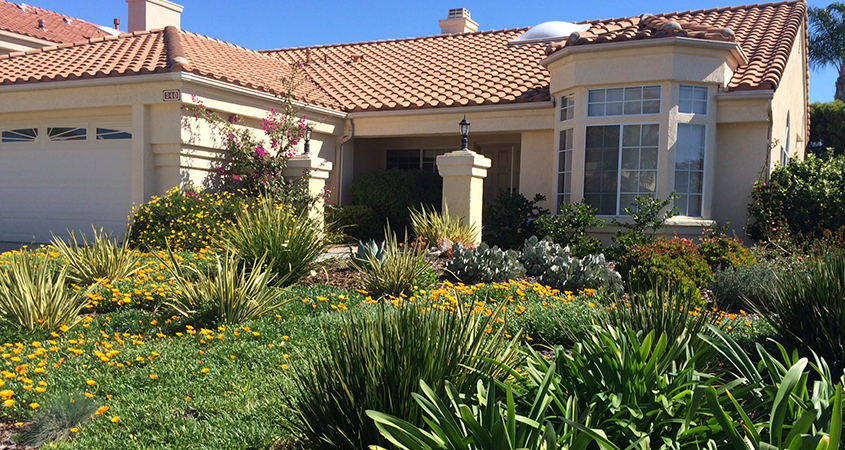
This homeowner took advantage of turf rebates to transform the front yard with climate-appropriate plants. Photo: San Diego County Water Authority.
Low water-use plants: 90%.
High water-use plants: 10%
For even greater water savings, shrubs that thrive in our San Diego-style Mediterranean climate take center stage along with smart choices of drought-tolerant trees and minimal turf for a lush landscape look full of texture and color.
Native Garden Effect: Very Low Water Use Planting
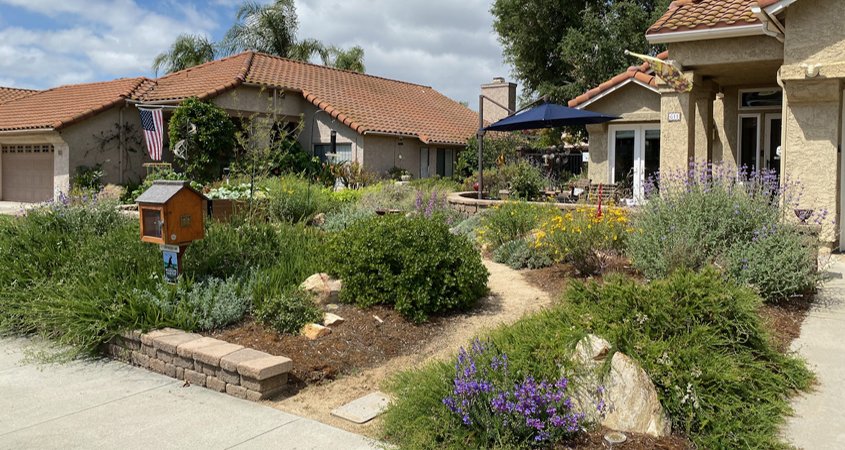
The Everetts’ winning landscape provides a native habitat and saves water. Photo: City of Escondido
Very low water-use plants: 50%.
Low water-use plants: 50%
California native plants and succulents thrive in our environments. They have adapted over thousands of years to survive on limited natural rainfall. Using natives to create natural habitat is the ultimate accomplishment in WaterSmart landscaping design.
Refer to the plant lists in A Homeowner’s Guide to a WaterSmart Landscape, or ask a local nursery professional for help choosing your landscape plants from the appropriate categories.
WaterSmart landscapes are an upgrade, not a compromise. Creating a yard that loves San Diego as much as you do also creates a sustainable habitat that also preserves our native environment. It can save you maintenance time and costs and conserves our most valuable community resource: water.
________________________________________________________

(Editor’s Note: The San Diego County Water Authority and its 24 member agencies offer programs, resources, and incentives to improve water-use efficiency for residential, commercial, and agricultural users. WaterSmart choices are a way of life in the region. Stay WaterSmart San Diego! For more water-use efficiency resources, go to WaterSmart.SD.org.)





